TSUKUBA FUTURE
#050 A Forest Girl Raised in the City
Associate Professor SAEKI Ikuyo, Faculty of Art and Design

We often hear buzzwords such as "coexisting with nature" and "conserving biodiversity." However, it seems that we do not really know what exactly these phrases mean or how critical it is to achieve them. UNESCO World Heritage Sites fall into the categories of cultural heritage sites, mixed heritage sites, and natural heritage sites. Prof. Saeki is researching how to utilize and conserve nature by studying forest trees and the animals that live in them.
When you hear the word "maple," you probably think of Canada. After all, the Canadian flag has a maple leaf on it, and maple syrup is one of the country's most well-known exports. However, the majority of the 160 species said to be in the maple family are native to East Asia. In addition to the 28 species of maple indigenous to Japan, many cultivars have been created. Maple trees have long been a familiar part of Japanese life in nature and in culture, from the viewing of autumn foliage, to bonsai and landscape gardening.
Prof. Saeki is especially fond of kaede varieties of maple trees. As the topic of her doctoral thesis, she chose to research conservation of the Japanese red maple, an endangered species of maple. She narrowed her focus to the Japanese red maple (Acer pycnanthum) after working on a research project comparing it with the American red maple (Acer rubrum) (a very closely related sister species) while studying abroad at the University of Michigan. The natural habitat of the Japanese red maple is gently sloping marshland such as areas near rivers. It is believed that the species became endangered when its habitats were fragmented due to development of land near human settlements and the trees began to disappear. However, it was found that other rare species besides the Japanese red maple also grow in that same habitat. Now, Prof. Saeki is also researching the Miyabe maple (Acer miyabei), another endangered maple species that is unique to Japan. The Sugadaira Montane Research Center at the University of Tsukuba is one site of her research.
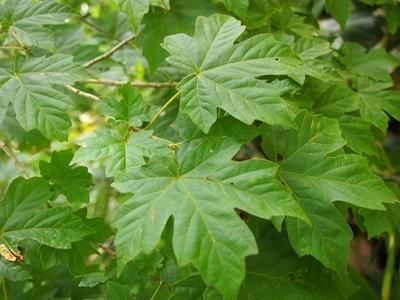
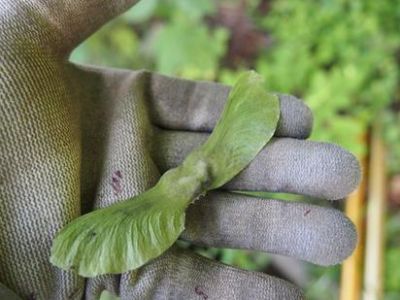
Miyabe maple trees and seeds at the Sugadaira Montane Research Center
Whereas the Japanese red maple is completely dioecious (each tree has either female or male flowers), there are three varieties of Miyabe maple: monoecious (the same tree has both female flowers and male flowers), female, and male. This complex reproductive system may be a reason why habitat fragmentation is having such a major effect on the species. Studying molecular markers in pollen is an effective method for finding out what range of trees can be pollinated. The parent plant can be identified by using characteristic sequences in DNA molecules as indicators. This method of mapping such data along with tree habitat environments and tree distribution to estimate the effects of fragmentation is called landscape genetics.
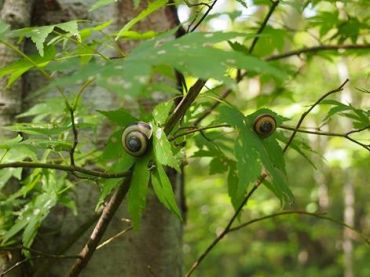
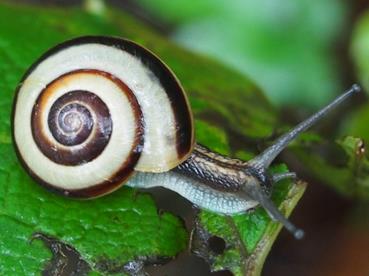
Sapporo mai-mai in the trees
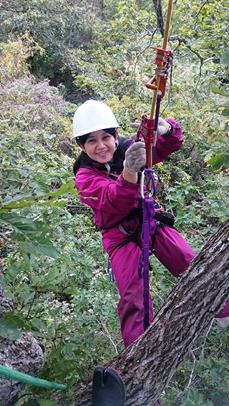
She sometimes climbs trees when necessary
Prof. Saeki joined the University of Tsukuba in April 2014 as a faculty member for the Certificate Programme on Nature Conservation, which was established in the World Heritage Studies Program of the Graduate School of Comprehensive Human Sciences. The first and foremost thing one must do to protect nature is to understand the ecology of the plants and animals that live within it and decide on a conservation strategy. Depending on the location, it may be necessary for those plants and animals to coexist with humans. Therefore, it is necessary not only to protect nature but also to choose a strategy that allows for nature to be utilized in coexistence with humans. Prof. Saeki was raised in the city and did not always have a love for living things. However, she became interested in nature and environmental protection in high school and decided to pursue that path. This field requires both a basic science approach and an applied science approach. It also requires experts who can expand the ways we interact with conserved natural environments. Prof. Saeki says that there are still a lot of things that she wants to do, and the University of Tsukuba gives her the opportunity and place to pursue her projects in full force.
Article by Science Communicator at the Office of Public Relations


